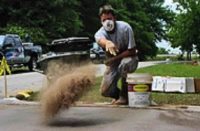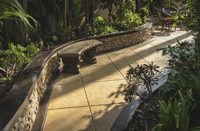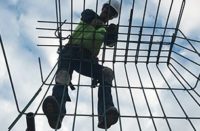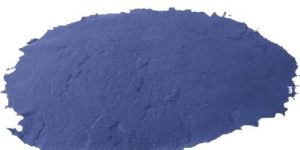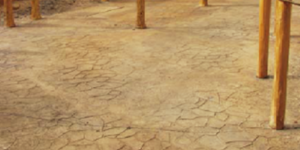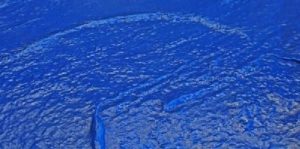 Adding Profit & Great Looks While Undercutting the Competition.
Adding Profit & Great Looks While Undercutting the Competition.
New-and profitable-tricks can be learned by old dogs, including concrete and contractors. Concrete texture skins and color release chemicals are changing the look of concrete, as well as the bottom line of contracting. Due to more customers wanting their concrete to resemble more expensive materials, they are willing to pay for it. Thus, applying texture skins increase profits for concrete contractors worldwide.
To meet the newest customer demands, contractors are using trowel-in color hardeners, color and clear release agents, and flexible texture skins to impress every pattern imaginable. The result: contractors can now produce concrete that is nearly a dead ringer for more expensive materials, but at a warehouse-store price.
Skinning looks easy enough: When concrete passes the thumb test-impresses only about a quarter inch-release agent are spread. Then urethane or high polymer plastics mats with raised images of slate, granite, sandstone, bricks, seashells, dinosaur footprints, alligator claws, leaves, branches, even geometric patterns, such as compasses and stencils, are laid on the fresh mix and gently tamped.
The concrete has been imprinted with the decorative impressions when the mats are lifted. Appropriate colors can be mixed into the concrete or spread on the wet surface and worked in before skinning. Stains can be applied after the concrete is dry.
Texturing and coloring can increase costs from 50 to 100 percent, but customers who appreciate value happily pony up their dough. The contractors who take the time to educate the customers and sell them on texturing can raise their prices accordingly. Then laugh all the way to the bank.
But it’s not that simple.
Skinning: More Than Pouring and Tamping
Properly done, the process starts long before the mud arrives. “Preparation and layout are everything,” Lee Levig, proprietor of Concrete Work in the San Francisco Bay Area, said. “The more time you take to prepare, the better job you will do.”
 Preparation is just one step in what Doug Bannister calls “controlling the environment. By doing that, a concrete finisher’s more productive and not working three jobs-placing, finishing and skinning-at once.”
Preparation is just one step in what Doug Bannister calls “controlling the environment. By doing that, a concrete finisher’s more productive and not working three jobs-placing, finishing and skinning-at once.”
Long before the forms are set and the mud arrives, Levig draws the project, using a computer-assisted design (CAD) program. He includes all of the dimensions, the various joints, the stamp patterns, and the textures. Levig also reviews every step before the trucks start rolling out.
Any job that looks easy almost always has an expert at the end of the tools. Many of those experts offer training opportunities that can give you the same professional results. Timing is critical when using texture skins. Because the impressions stretch the surface of the concrete, the plasticity of the mix is critical. That’s why careful contractors check the weather forecast. Rain, wind, or a hot sun can significantly affect the curing time of the concrete. Concrete that passes the thumb test will usually imprint well.
Texturing requires Precision
Left to become too-hard and the pour can be very difficult to texture, and may even cause surface cracks.
Not waiting long enough, and the water in too-soft concrete might break through the release agent. A powder release agent used on too-wet mix could stain the concrete heavily or unevenly. Impressions could “pillow,” which means they bulge, instead of being crisp. Footprints can also show. “You might also get ‘squeeze,’” Bannister, owner of The Stamp Store in Oklahoma City, said, “which means joints would need more detailing to look good.”
Even vertical surfaces, such as stair risers, cantilevered pool edges, or bullnose borders, are candidates for texturing. Once the concrete has consolidated, a worker will treat these delicate surfaces with a smaller skin, one that has a straight edge that can align with joints, and carefully pat or slap the mat with a hand or other suitable but flat tool.
Joints: A Potential Problem
Having different textures or stamps on opposite sides of a joint can present problems, but solutions are plentiful. Casto favors using jigs to keep a stamp pattern from crossing a joint. Others use skins. Bannister will cut a 1⁄16-inch sheet of polycarbonate to match the contour of the joint. “You can run your stamps across it and there is no problem.” Because the polycarbonate is so thin, the stamp will appear clean and uniform up to the edge. “The whole idea is to get a monolithic pour that looks like separate ones. It gives you a structurally superior slab and saves the owner money.”
 Casto has even seen the two sides poured on separate days, so that one will be hard while the second is being placed and textured.
Casto has even seen the two sides poured on separate days, so that one will be hard while the second is being placed and textured.
The skinning process can be destructive on joints and may even collapse them to some extent, which can look unprofessional or require reworking. Some customers, however, prefer the way partially collapsed joints look. The so called, collapsed joint look, once mastered, can also give the concrete a uniquely rugged stone-like look along its edges.
Skinning or Stamping: Which Is Better?
While both skinning and stamping produce decorative impressions, many differences exist. Skins, while producing more shallow impressions, are much easier to handle, faster and more forgiving, as well as available in a wider selection.
Stamps produce deeper impressions, but are repetitive. Often interlocked and demand extreme attention in order to get a professional look. The forms must be aligned carefully and checked often during the installation in order for the job to look professional. Las Vegas contractor Ron Garamendi said, “You have to be on with the layout and keep checking lines. If you are off the line, even a minimal amount, it will show up.”
Since skins produce a random appearance that seems more natural, they don’t have to be carefully aligned. As a result, well-honed skinning crews can texture several thousand square feet a day, according to Bob Harris, a former contractor and current director of product training at the Scofield Institute. On big jobs, he said, “you can have a skinning crew following behind a pouring crew. A typical stamping crew might do a thousand square feet a day. It is not unheard of for a skinning crew to do a couple of thousand feet per day.”
Skins can also produce unique textures where stamps would create only headaches. Harris had a customer who wanted mounds in his driveway, like those in a skateboard park. Making a stamp pattern look professional would have been very difficult, because of the contours. With skins, his crew had no problem producing a fine texture.
Skinning: Materials and cost
A skinning crew generally uses a variety of mats, ranging from very small to large. For a driveway job, Bannister recommends two skins that are 20 inches square, one three feet on a side, and four that are five by five. He will usually cut one of the 20 x 20s so that it has a straight edge or a 90-degree corner for skinning into corners and up to walls.
Levig likes to have two or three mats per finisher to do about 600 square feet a day. Levig also makes his own skins with liquid polymer rubbers poured out over unique rock formations he finds in the Sierra mountains.
Skins cost upward from $120 and require careful cleaning throughout the job. Otherwise, they start to pick up concrete from one position and carry it to the next. This can leave unnatural blemishes in an otherwise rough finish.
 Color Adds Realism
Color Adds Realism
Both integrally colored concrete and broadcast colors or both can offer greater depth of color and make the finished concrete look natural. Choosing between the two methods most often depends on what color the customer wants.
Integrally colored concrete is usually better when earth tones or medium shades are desired, although some very light and very dark shades are available. Broadcast colors-pigments that are thrown or “broadcast” onto the wet concrete and then troweled in-are the product of choice to produce very light or dark concrete.
Since natural stones contain mixtures of colors, Harris said, some contractors attempt to reproduce these tones by “flashing” or broadcasting pigments onto integrally colored concrete. Herman Bettencourt of Azores Concrete Floor Specialists in Aylmer, Quebec, keeps a stable of six or seven broadcast colors and uses them in different combinations to mimic different natural materials. “Mixing and using colors is a real art form.”
Broadcast colors add work, and therefore cost, to the project. This is because they have to be worked into the surface before skinning. When using color hardeners, Bannister cuts the volume he will pour by about a third. Some pours are so large, the crew cannot throw the color far enough to reach every area.
According to Casto, integrally colored concrete does not accept release patterns and agents as well as broadcast color.
Skinning New Concrete and Overlays
Texturing new concrete is generally more forgiving than skinning overlaid mix. Since most new pours are 31/2-inches thick or more, they are less likely to dry or “crust” prematurely, Harris said. Most overlays are a half inch or less and have less moisture to evaporate. Another problem with overlays is that some reliefs can bottom out on the hard substrate. “Generally, you should overlay about twice the depth of the imprint,” he added.
Selling Textured Concrete-and Its Increased Costs
“Textured concrete competes well with higher-end products,” said Casto, “but a contractor has to educate the customers.” Because texturing entails more labor, it can drive up costs considerably. Price hikes can make up for the higher cost.
 “If the buyers compare textured concrete with the regular, gray stuff, it seems expensive,” Casto said. “But, put it next to more expensive materials, such as actual stone, redwood decking, etc., and it does very well.” A married couple balked at paying $42 per square foot for Italian stone on their patio. Casto showed them textured concrete that resembles such stone and closed the deal for $16 per foot.
“If the buyers compare textured concrete with the regular, gray stuff, it seems expensive,” Casto said. “But, put it next to more expensive materials, such as actual stone, redwood decking, etc., and it does very well.” A married couple balked at paying $42 per square foot for Italian stone on their patio. Casto showed them textured concrete that resembles such stone and closed the deal for $16 per foot.
Skinning Requires Lots of Experience
“Every variable that you have in regular concrete is intensified when you are using skins,” Casto said. “You have to adjust the mix and the application techniques so that there’s no water standing on top, you have to have the proper amount of the right-size rock, you not only have to get a finish on it, but the imprint has to be consistent across the entire surface.
Like all art forms, there is room for individual techniques. Garamendi, concrete division operations manager for Recreational Development Co., will often start imprinting if the concrete is still a little wet. He must because he pours massive amounts when building the huge concrete expanses in and around Las Vegas’s hotels and casinos. Canada’s colder climate means that Bettencourt has to start texturing while the mix is wetter. Additionally, this type of work needs larger crews. 
Many groups offer training programs. However, many crews learn on the job. Harris advocates formal training and then lots of practice. “Learn on wet and compacted sand with stamps or skins,” he said. “Beginners should start out slowly, experiment at home and go from there.”
One thing no training course can teach is a knack for texturing. “Some guys don’t have an eye for detail or the drive to master it. It took a good eight months to get five out of our 20 guys to where they were really skilled at skinning,” Garamendi noted.
Despite the time it takes to learn skinning, contractors across the country are adding textures to the services they offer. Skinning, when done well, makes customers happy while providing a new and generous source of profits.
